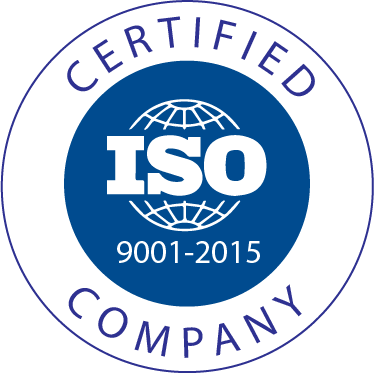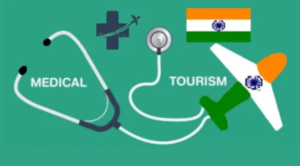In India, the expense for receiving Radiation Therapy, a type of cancer treatment, starts at about Rs 60,000 and can escalate up to Rs 2,50,000. With an increase in the count of radiation sessions, the total cost correspondingly rises. For example, a patient receiving 30 sessions of radiation might incur costs close to Rs 2,46,000 bifurcating it to radiotherapy cost per session in India. Radiation therapy, often termed radiotherapy, functions by damaging the DNA in cancer cells, which obstructs their ability to multiply and grow.
Radiotherapy Cost per Session in India
This treatment can affect both cancerous and healthy cells. Thus, its primary goal is to minimize its impact on healthy cells. Healthy cells possess the capability to heal themselves after being exposed to radiation. The expense of radiation therapy differs in various Indian cities.
As an example, in Delhi, prices may vary between INR 60,000 and 2,00,000, whereas in Mumbai, they could be in the range of 1,00,000 to 3,00,000, and in Bangalore, the costs might fluctuate from 70,000 to 2,25,000.
In the context of Internal Radiation Therapy
Often known as brachytherapy, this technique involves the placement of a radioactive source inside the patient’s body, targeting cancer cells directly.
Intensity Modulated Radiation Therapy (IMRT): A type of 3-D radiation that targets tumors from various angles with multiple small radiation beams.
Volumetric Modulated Arc Therapy (VMAT): This technique uses a narrow beam of varying intensity radiation, rotating 360 degrees around the patient for a three-dimensional treatment approach.
Proton Therapy: This uses protons instead of x-rays, allowing for more precise targeting of tumors.
Gamma Knife: A form of precision radiation therapy for small tumors, focusing an intense radiation beam on the target area while sparing surrounding tissue.
Image-guided Radiation Therapy (IGRT): Enhances traditional radiation therapy by incorporating imaging during treatment for greater accuracy.
Comparison of Radiation Therapy Costs Globally:
India boasts numerous well-equipped hospitals offering cost-effective cancer treatments.
The cost of radiation therapy in India typically ranges between Rs 60,000 to Rs 2,25,000 or US$500 to US$ 30,000.
However, the exact cost depends on a thorough analysis of the cancer type.
The treatment involves advanced technology, experienced staff, and specialized doctors.
The specific cost in India largely depends on the radiation type and the number of required sessions.
Many hospitals and online platforms offer financial assistance, and insurance often covers a portion of the cost.
Pre or Post Treatment:
The overall cost may vary based on diagnostic tests and monitoring the treatment’s progress.
Additional Treatment Methods:
Besides radiation therapy, other common cancer treatments include:
Chemotherapy: Uses powerful drugs to destroy cancer cells, often combined with radiation therapy for enhanced effectiveness.
Surgery: Aims to completely remove solid mass tumors, often preferred when other options are available.
Factors Affecting Radiation Therapy Cost in India:
Cancer Type: The cost depends on the cancer type and stage, influencing the choice of radiation therapy.
Treatment: The duration and dosage of radiation therapy affect the cost. Hospitals usually offer package deals based on these factors.
Location: Costs vary by city and hospital, with some cities like Delhi offering more affordable options.
The Role of Radiation Therapy in Cancer Treatment:
Radiation therapy is effective for various cancers, helping to slow or stop their growth and prevent relapse.
It’s also used for palliative care, easing symptoms like pain and breathing difficulties.
Radiation oncologists often recommend this therapy, though patients may have concerns about lifetime radiation exposure limits.
The therapy is carefully dosed in grays, tailored to the cancer type and stage.
For example, leukemia treatment may involve 20 to 40 gray units, increasing in severe cases.
Radiation therapy can be combined with surgery to prevent cell growth.
Indian Radiation Therapy Centers follow strict guidelines, treating a large number of patients annually.
Most patients experience no pain during treatment, though some may feel temporary weakness or nausea due to anesthesia.
How UniMediks help in onboarding of a foreign patient in India?
UniMediks, a prominent healthcare facilitator, plays a crucial role in assisting foreign patients seeking medical visas for India, particularly for affordable cancer treatment. We streamline the process by offering comprehensive services that begin with identifying the most suitable hospitals and oncologists in India. Our expertise in navigating India’s healthcare system allows us to pinpoint facilities that not only offer state-of-the-art cancer treatments but also do so at cost-effective rates.
UniMediks liaises directly with hospitals, ensuring patients receive detailed information about treatment options, costs, and duration. This transparency is vital for patients to make informed decisions. Additionally, they assist with the logistical aspects of obtaining a medical visa, making the journey to India smoother and less daunting.
Our support extends beyond hospital coordination. We provide assistance with accommodation, local transportation, and language translation services, ensuring a comfortable stay for the patient and their family. By handling these practicalities, UniMediks allows patients to focus solely on their treatment and recovery.
In a nutshell, we serve as a bridge, connecting foreign patients with quality, affordable cancer care in India, while simplifying the complexities associated with international medical travel.
Takeaway:
Annually, many people successfully undergo radiation therapy in India for various cancers. It’s also effective for benign tumors. India is a destination for international medical tourists seeking cancer treatment.
The “takeaway” from this discussion is multifaceted and significant. Initially, this underscores the significance of both accessibility and cost-effectiveness in healthcare, particularly for essential treatments such as cancer therapy. The ability of nations like India to offer top-tier medical services at significantly lower costs than many Western countries stands out as a key consideration for patients globally, especially those from areas where such treatments are either excessively costly or not as developed. This situation not only highlights the international integration of healthcare but also stresses the importance of creating more balanced healthcare solutions around the world.
Furthermore, the takeaway underscores the role of medical tourism in today’s interconnected world. This illustrates the way in which healthcare infrastructures across various nations can work in tandem, providing patients with an expanded array of treatment choices. Additionally, this context sheds light on the crucial role played by entities and intermediaries that act as connectors between patients and medical service providers internationally, making certain that logistical obstacles do not impede the availability of vital medical treatments.















